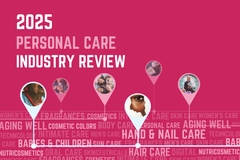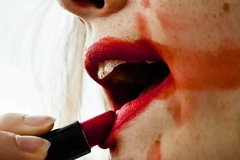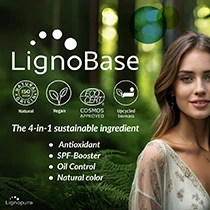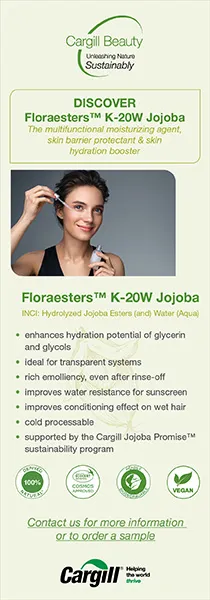Shifting the shea landscape: Demands for supply transparency rise amid uprooted African trees and employment
07 Dec 2023 --- The multi-billion dollar shea industry is under threat as roughly 8 million shea trees are uprooted annually, according to the Global Shea Alliance (GSA). This means the market is highly lucrative but, like many sectors, rife with challenges and opportunities.
The destruction of shea trees is damaging employment for rural women throughout major production regions despite continued growth in product launches. That has led to more calls for improved supply chain transparency to protect workers’ rights and environmental sustainability.
Personal Care Insights looks closer at the industry’s impact on critical African regions and how companies with a vested interest in this space collaborate to promote sustainability for consumers, industry workers and the environment.
“Women’s gold”
Shea butter is derived from the nuts of karite trees and only grows in Africa’s “shea belt,” stretching across the continent south of the Sahara.
Vitellaria paradoxa grows mainly in Western Africa, while Vitellaria Nilotica (a sub-species of Vitellaria paradoxa) is native to East African countries such as Uganda, Kenya and Sudan.
Shea butter from Western Africa is denser while the East African nut (nilotica shea butter) is more fluid.
Rural women mainly source the butter in the western region and rely on its production as their primary source of income, hence the term “women’s gold.”
Unfortunately, their livelihood may be threatened by the current state of shea tree removal.
 Women are mainly the workers who source shea butter, gaining the name "women's gold."GSA is a non-profit organization that aims to promote industry sustainability and standards.
Women are mainly the workers who source shea butter, gaining the name "women's gold."GSA is a non-profit organization that aims to promote industry sustainability and standards.
It tells Personal Care Insights almost 8 million shea trees “are lost [every year] across West Africa due to factors including climate change, lack of fallows, commercial agriculture, and tree removal.”
GSA warns, if current trends continue, “a projected shortage resulting in a major interruption in the West African shea supply chain is anticipated by 2044. The realities of such predication will have major consequences on the income of millions of women collectors and processors and threaten industry sustainability and shea’s global competitiveness.”
Mary Kay and corporate responsibility
The push for transparency and sustainability within the shea industry is driven, in part, by heightened consumer demand, which may influence industry practices and standards.
Skin care and cosmetics giant Mary Kay recently announced its partnership with GSA, telling Personal Care Insights they share a vision “of promoting a sustainable and competitive shea industry that benefits millions of women in Africa who depend on shea for their livelihoods.”
Mary Kay acknowledges sector challenges are “broad, yet actionable” and plans to work with GSA to “improve the working conditions and incomes of the women shea collectors and processors [and] support the efforts from the basics of more efficient equipment to more complex issues like access to financing and global markets.”
GSA tells us it is “thrilled at the prospect of collaborating with Mary Kay to drive substantial positive change within the cosmetics industry [and together], aim to establish new industry standards for social and environmental responsibility, transcending beauty to empower individuals, promote sustainability and foster a more resilient future for the millions of women who depend on shea.”
Shea butter business growth
Nut butter is found in many cosmetic products thanks to its high concentration of moisturizing fatty acids and vitamins. Its popularity helped create a multi-billion dollar industry with companies like Mary Kay offering a variety of shea products. Mary Kay recently announced its partnership with GSA for sustainable shea butter.
Mary Kay recently announced its partnership with GSA for sustainable shea butter.
Mary Kay points to its Satin line of products and says shea demand is strong and expected to grow even more “...especially in the food and cosmetics sectors [as] consumers look for natural and sustainable alternatives to other oils…We foresee the need for more innovation-thinking and collaboration among shea stakeholders to address the challenges and opportunities in the sector.”
Data from Innova Market Insights suggests a 10% average annual growth in the mention of shea in global personal launches from July 2018 to June 2023.
Seventy-one percent of the claims used in products with shea from July 2022 to June 2023 were Moisturizing & Hydrating.
Europe led the launches with a 45% share from July 2022 to June 2023.
Personal care reigns supreme, with all regions showing growth for shea, especially Latin America, with 14% growth from July 2018 to June 2023 (CAGR).
The leading category with shea mentioned from July 2022 to June 2023 was Skin Care (21%), followed by Body Care (21%). 14% of shares in launches were in Hair Care.
Industry lookahead
GSA says it is doing its part to improve the industry by reaching almost seventy thousand women with “business development services” but warns that much more progress is needed to protect the income of millions of women collectors and processors and the industry.
Mary Kay says its partnership with the GSA will involve looking at what is directly in its control, including its “own sourcing of shea,” and plans to collaborate on supply chain transparency to “ensure [shea’s] quality and traceability throughout the supply chain."
By Anita Sharma













